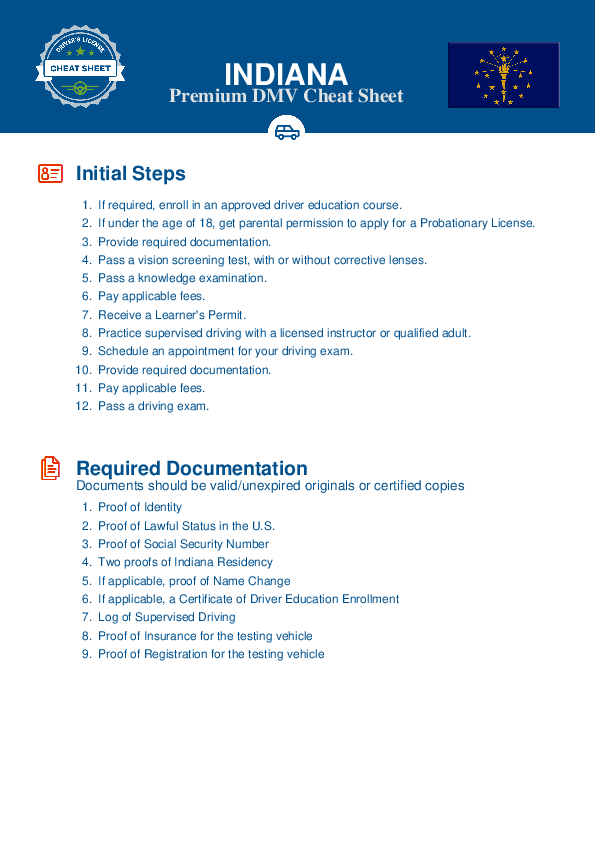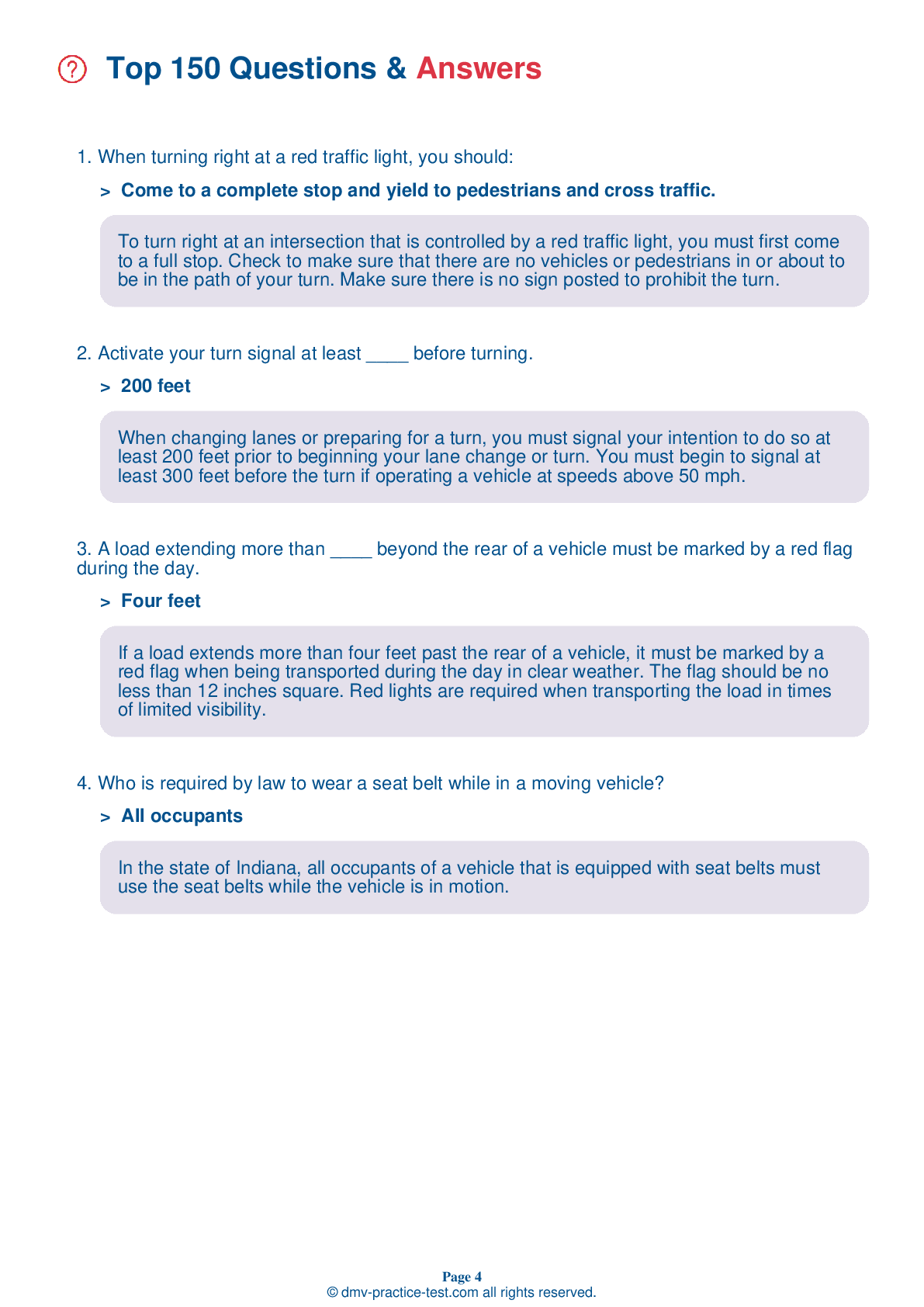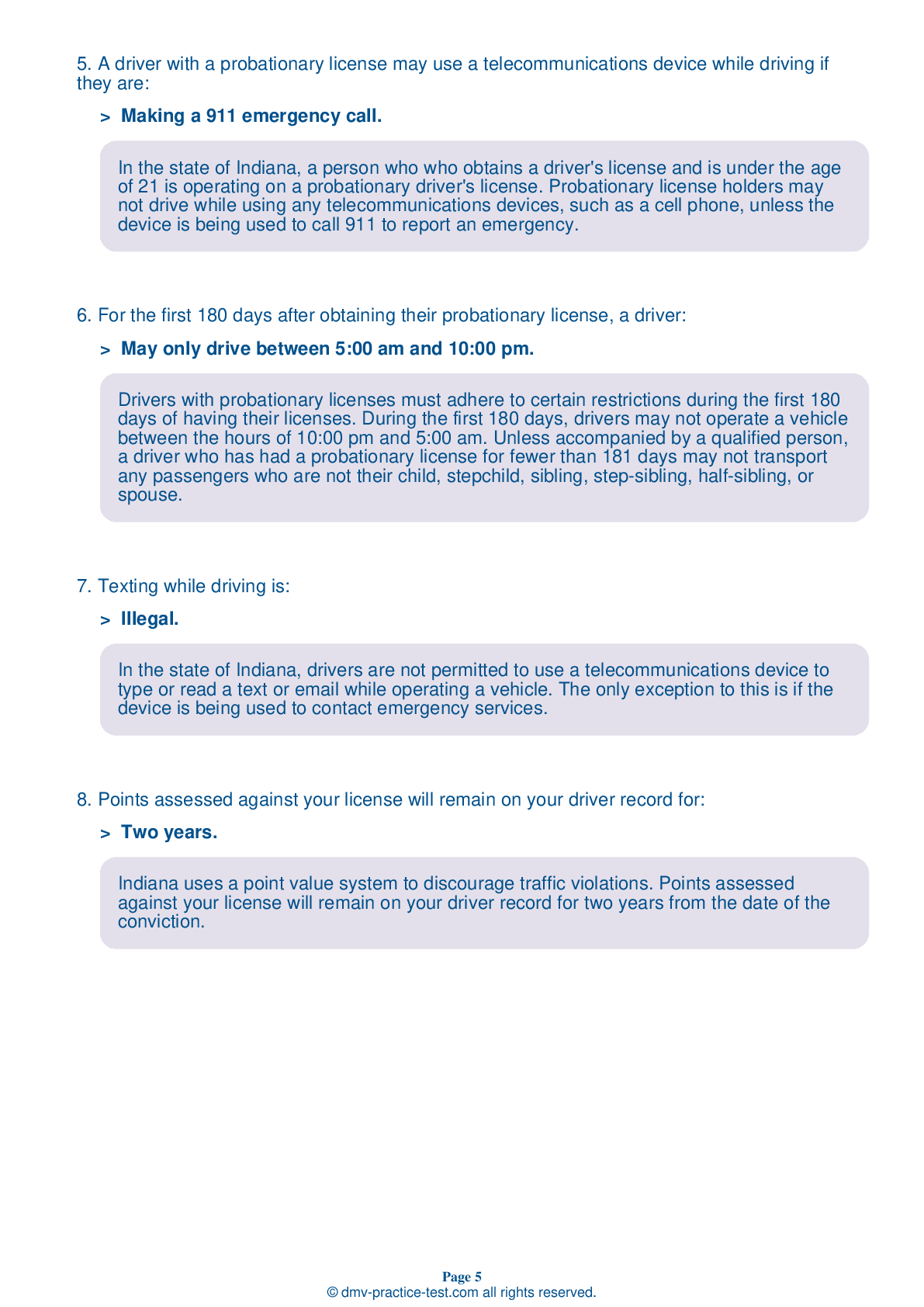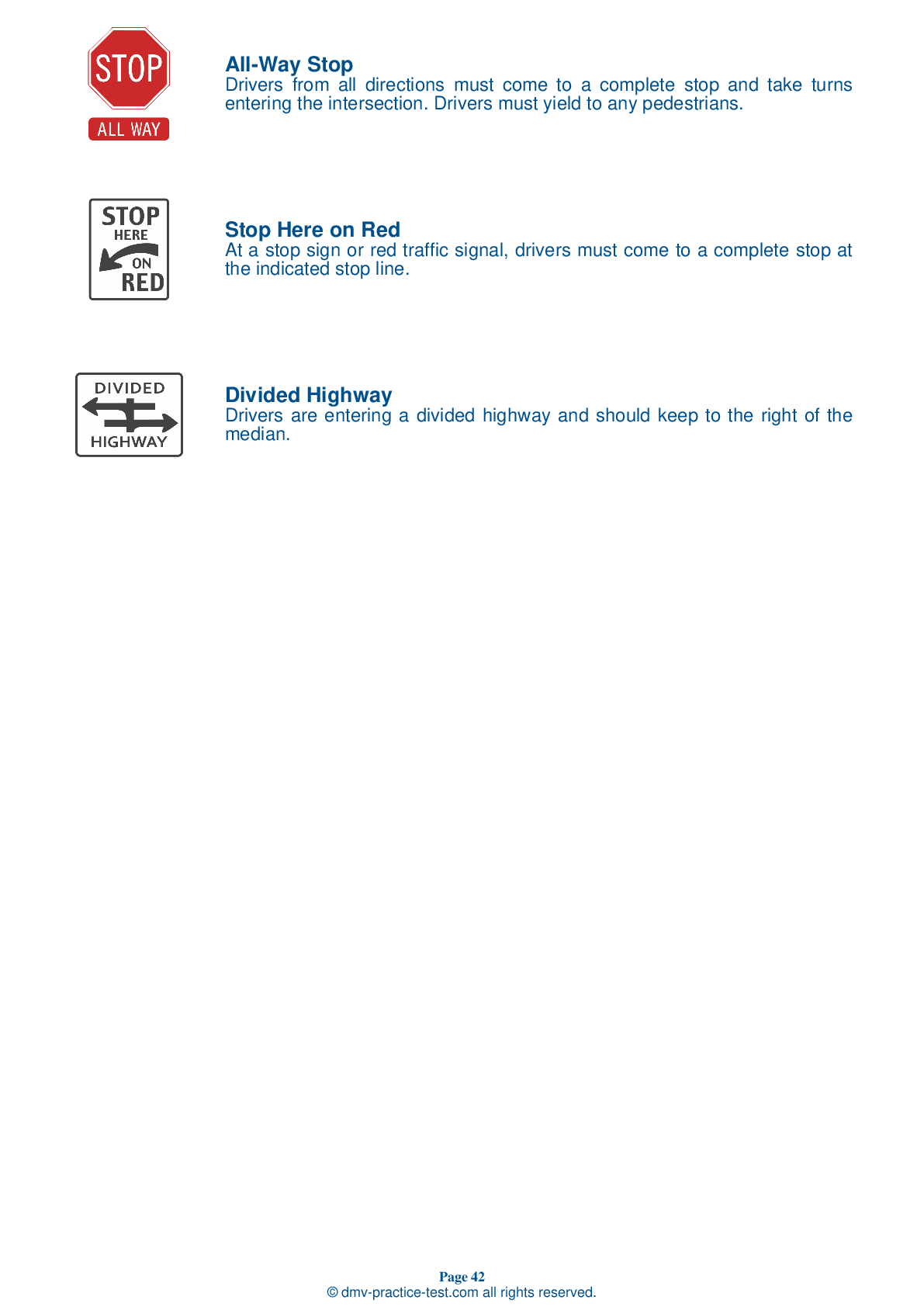FREE Indiana DMV Practice Test #1 Page 4 of 5
This set of Indiana DMV practise tests has been updated for January 2025. It includes questions based on the Indiana Driver Handbook's most significant traffic signals and laws for 2025. Use actual questions that are very similar (often identical!) to the DMV driving permit test and driver's licence exam to study for the DMV driving permit test and driver's licence exam.
On the practise exam, each question gets a tip and explanation to help you remember the concepts. The written component of the official Indiana DMV test will include questions about traffic rules, traffic signs, and driving statutes, as well as information from the Driver Handbook.
To obtain a passing grade, you must correctly answer 44 of the 50 questions. Take our DMV practise exam to help you prepare for your Indiana instruction permit or driver's licence.
The DMV exam is available in several languages.
Using any kind of testing assistance will result in an automatic fail, and the DMV may take additional action against your driver's licence, so stay away from it.
28 . This sign indicates that:
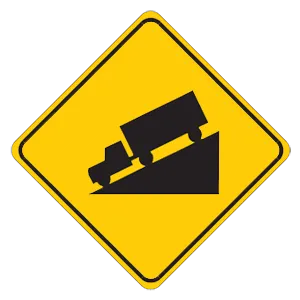
This sign warns that there is a steep hill or downgrade ahead.
29 . This sign means:
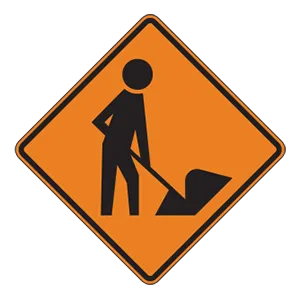
Construction zones pose dangers to both drivers and construction workers. Orange highway construction signs warn drivers to be careful when encountering construction zones. This sign tells drivers that a work crew may be in or near the roadway and that they should proceed with extraordinary caution.
30 . Your first response to reduced visibility should be:
Reducing your speed should be your first response to decreased visibility and dangerous road conditions.
31 . This road sign means:
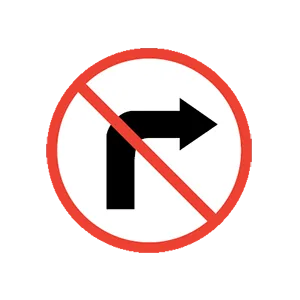
Regulatory signs display laws that drivers must always obey. Right turns are not permitted where this sign is present.
32 . An "End school zone" sign indicates:
Do not exceed the school zone speed limit during indicated times. The end of a reduced speed school zone will be indicated by an "End school zone" regulatory sign.
33 . What kinds of drugs can affect your driving ability?
Many kinds of drugs can impair your ability to drive. This includes illegal drugs and legal prescription or over-the-counter medications. It can be a criminal offense to drive while impaired by any drug.
34 . What should you do when you see this sign?
.png)
This sign indicates that there is a railroad crossing on the road ahead. You should always slow down when approaching a railroad crossing. Trains cannot yield to cars, so you must let them pass before crossing the tracks.
35 . This road sign means:
.png)
